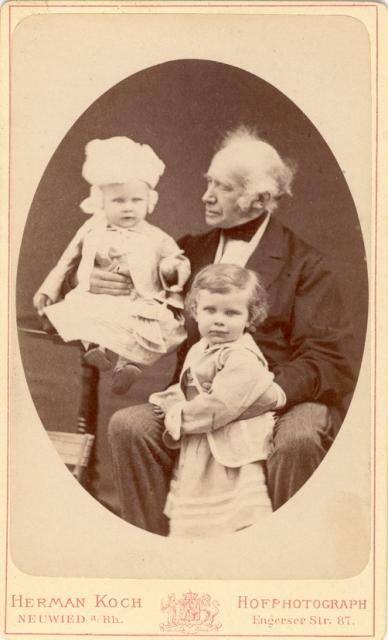Prince Frederick and his family
Prince Frederik left quite a mark on the appearance of Wassenaar. He enjoyed a military education and studied at the University of Leiden. He held several impressive positions, such as Admiral and Commissioner-General of War (similar to the current position of Minister of Defense). These titles almost make you forget that he was also "just" a man: a father and a husband, with hobbies and interests. Who was Prince Frederick really and what did his life look like in the lee? You will discover it here.
Prince Frederik was one of the wealthiest men in the Netherlands in the 19th century. He received substantial inheritances that increased his wealth considerably. In addition, rents from farms and the proceeds from sand mining, breweries and sawmills, for example, provided substantial income. In the colder months he lived in The Hague, where he gave receptions and visited the opera and concerts. In the summer and autumn he and his family stayed at his country residence De Paauw, where he also received guests in a more informal atmosphere and could lead a quiet existence.
Just one day...
At De Paauw, Prince Frederik's days passed quietly. In the morning, the ladies took breakfast in their rooms and he ate with the gentlemen in the dining room. Prince Frederick was a workaholic who often sat in his study. Today this is the mayor's room.
Then they played cards or billiards. Or they drew, embroidered or played music. After lunch everyone rested and then it was time to get some fresh air. Prince Frederick liked to take his guests on pleasure rides through his park and had a fondness for hunting. The women visited one of the gardens near the house, such as the Princess Garden or rose garden, or the moss or flower garden. After these efforts, dinner was ready and they could recharge for a quiet evening.
An avid hunter
Prince Frederick was fond of hunting. It was an ideal time for gentlemen to meet and compete with each other. In a special carriage they rode to the hunting grounds, where trackers hunted the game for them. Servants carried their equipment, handed them the guns and retrieved the shot game. The prince and his guests also tested their shooting skills at the shooting house. After the hunt, they met with satisfaction at Ter Horst hunting lodge for a delicious meal and good political conversation.
Father and husband
Prince Frederick married his niece, Princess Louise of Prussia, on May 21, 1825. They spent a lot of time together, but also each had their own agenda. For example, Louise sometimes went to a spa because of her health, while the prince made a work visit. Often they traveled to meet afterwards. They had four children together: Louise, Willem, Frederik and Marie. His two daughters grew up and married; Louise became the queen of Sweden by her marriage. The death of both their sons at a young age brought the couple much grief. William was only one year old and Frederick died at age 10.

The peacemaker
Prince Frederick was known as a sympathetic man with a stable character and a great sense of responsibility. He took good care of his staff and soothed tempers in the family, which sometimes ran quite high. For example, the prince stayed in touch with his father despite his contentious second marriage. And when his father died, he continued to support the widow. He mediated his sister Marianne's divorce, and he settled his brother William II's heavily indebted estate. Prince Frederick played a major role as reconciler.
A Freemason
Prince Frederick was Grand Master of the Order of Freemasons. This was an organization of gentlemen who wanted to improve society and put themselves at the service of their fellow man. Despite the good intentions, the prince received much criticism: the Order was a private and therefore somewhat secretive society and especially the Catholics saw this as a threat. The prince was not deterred by this and was Grand Master for over 65 years and donated a large collection of special books and a lodge building on the Fluwelen Burgwal in The Hague to the Order.
Traveling
Prince Frederick traveled frequently to conduct business, maintain social contacts or escape the hustle and bustle of the city. He regularly traveled from his city palace in The Hague to his estates in Wassenaar and Bad Muskau, a place on the Oder River in today's German-Polish border area (he had several estates in this former Silesian region). The prince was also often to be found in Berlin, where he had grown up and had many relatives living. He traveled by carriage. From 1843 after the construction of the railroad towards Amsterdam, the train was a much faster and more comfortable alternative. In doing so, he had his own carriage, while there was also enough room for the court that accompanied him.
Find out for yourself!
Prince Frederik is no longer around but if you want to get an idea of his life, visit (parts of) the parks route. Walk through De Horsten the way he used to, see the country houses, which were part of his vast estate and enjoy a drink in the former shooting range, which is now a teahouse. History will come alive!